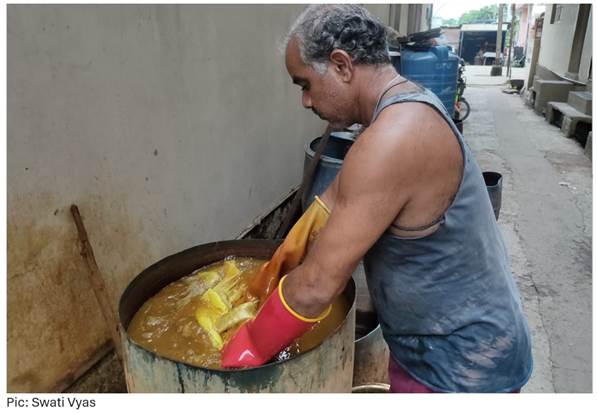The Bhairongarh region has a rich cultural heritage, with Bhairongarh prints being a prominent aspect of its tradition. Bhairongarh prints is an ancient traditional block printing technique of central India. These prints are centuries old and have a significant importance in the history of traditional Indian craft. However, they are losing their appreciation in the era dominated by modern, machine-driven textile manufacturing. The artisans of this craft face a few challenges, especially due to the lack of demand for the product as the market is saturated with low quality prints.
Bhairongarh prints are not only artistic expressions but also hold deep-rooted meanings within the social ecosystem of the community. However, factors such as globalisation, modernisation, and lack of patronage have led to the decline of this traditional art form.
Historical Significance
Bhairongarh Prints have a long history, dating back centuries, and have been integral to the identity and cultural practices of the community. They reflect the traditions, beliefs, and values of the people, serving as a visual representation of their heritage.
Cultural Importance and Symbolism
These prints are not merely decorative; they carry profound symbolism and cultural significance. Each motif, color, and pattern hold meaning, often representing aspects of nature, mythology, or social hierarchy. Understanding these symbols is crucial for preserving the authenticity of Bhairongarh prints.
Challenges Faced by Bhairongarh Prints
Despite their cultural value, Bhairongarh prints have faced numerous challenges in recent years. Economic pressures, changing consumer preferences, lack of infrastructure, and competition from mass-produced textiles have contributed to the decline of this art form. Additionally, the dwindling number of skilled artisans poses a significant threat to its continuity.

Strategies for Revival
Reviving Bhairongarh prints requires a multifaceted approach that addresses various challenges while leveraging opportunities for growth. These include:
-
Capacity building and skill development programmes for artisans.
-
Promoting awareness and appreciation of Bhairongarh prints through educational initiatives and cultural events.
-
Establishing market linkages and providing financial support to sustain the livelihoods of artisans.
-
Incorporating modern techniques and designs while preserving traditional craftsmanship to appeal to contemporary consumers.
Conclusion
Bhairongarh prints represent more than just a form of artistic expression; they are vital components of the social ecosystem in the Bhairongarh region of Madhya Pradesh. Preserving and reviving this traditional art form is essential for safeguarding the cultural heritage and sustaining the livelihoods of local artisans. By implementing targeted strategies and garnering support from various stakeholders, Bhairongarh prints can experience a resurgence, contributing to the conservation of the social ecosystem and fostering sustainable development in the region.











Comments